What are you waiting for?
Freiburg, May 03, 2017
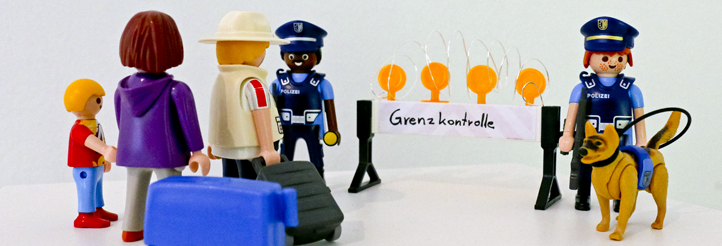
Photo: Max Orlich
People wait to enter somewhere, such as at the border to another country. They wait to exit somewhere, such as an overcrowded streetcar. They wait for little things (the elevator) or for big things (better times). In a one-year project seminar under the direction of Dr. Sarah May and Dr. Florian von Dobeneck, European ethnology students have examined how and what people wait for, what they feel as they wait and what they do to kill the time as they wait.
Three Freiburg master students addressed various contexts in which people wait while conducting field research, the results of which will be presented in their exhibit „WarteArt“ (aWAITing Art). Rahma Osman Ali investigated waiting situations while in traffic; Ruth Weiand studied waiting at the doctor’s office; and Julia Dornhöfer dealt with waiting as an elderly person. They observed and interviewed people who were waiting, waited themselves and wrote protocols about their own feelings as they waited. The research results will be displayed in the form of images and videos, texts and audio files. Visitors can see everyday objects and simulated spaces. Julia Dannehl spoke with the researchers and asked what made their respective topics so interesting.

Rahma Osman Ali spoke with commuters about waiting situations in traffic. Photo: Ingeborg Lehmann
How does waiting in traffic differ from other waiting contexts?
Rahma Osman Ali: Unlike other waiting contexts, there are two types of waiting situations in traffic. On the one hand, there are the unforeseen interruptions in traffic flow if you have to wait, for instance, during a traffic jam or a train connection is canceled. On the other hand, there are waiting situations in traffic that we don’t even notice or at least they don’t bother us, such as waiting at a red light.
How do people perceive waiting in traffic?
As soon as something unexpected happens, you consciously wait and feel subjected to the situation. But if you know ahead of time that sooner or later you will be confronted with a red light, you don’t feel disturbed in your flow of movement and can therefore tolerate waiting much better. In generally, however, waiting is an extremely subjective experience. One person can feel completely disturbed by a waiting situation while another may have a pleasant experience, not having to concentrate on traffic for a few minutes and to sip coffee in peace, for instance, instead.
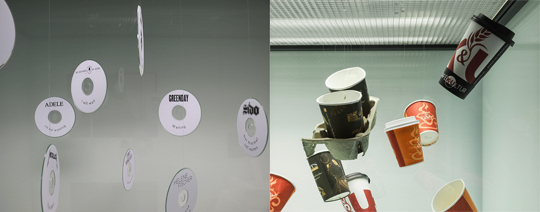
Music and coffee help make waiting in traffic and elsewhere more pleasant. Photos: Max Orlich, Ingeborg Lehmann
How do you prefer to spend your time waiting?
If I have to wait, I have to listen to music or I’ll otherwise get pretty impatient. I try to concentrate on something – anything – and at some point it becomes unbearable because I notice how slow time is inching by. If I have to wait for the train, for instance, it is much more pleasant to listen to music than to just stand around and exchange helpless looks with my fellow passengers. When I listen to music, I don’t mind waiting at all.
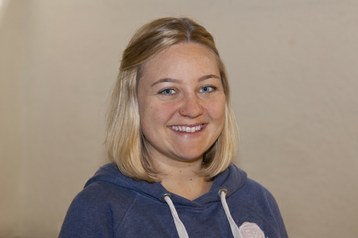
Ruth Weiand waited at the doctor’s office and examined the waiting room’s atmosphere.
Photo: Ingeborg Lehmann
How does waiting in the doctor’s office differ from other waiting contexts?
The most obvious different is that most people are physically unwell and that that for which they are waiting – the doctor’s visit – most likely will not be joyful. That is the reason why waiting at the doctor’s office is always a negative type of waiting. What is interesting here is the spatial dimension that we don’t find in other waiting contexts: No one in the waiting room is not waiting and none of those waiting can simply remove themselves from the situation by leaving and waiting elsewhere, for instance. The reason is, among other things, the fact that you don’t know how long you have to wait. That is why waiting practices arise in a very compact form in waiting rooms, such as changing seating positions or playing with your cell phone because everyone is trying to kill time the best they can. Waiting clearly becomes a time-based interim phase and the waiting room is the transitional space. A very specific atmosphere reigns in a waiting room: everyone is on their own; everything is very anonymous. People barely exchange words with one another. It is very quiet, which differs greatly from other waiting situations.
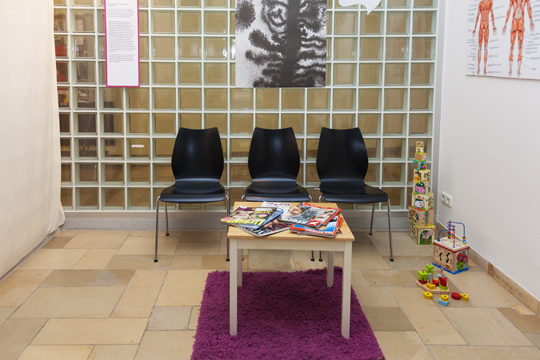 The simulated waiting room reminds visitors about the particular atmosphere in the doctor’s waiting room. Photo: Ingeborg Lehmann
The simulated waiting room reminds visitors about the particular atmosphere in the doctor’s waiting room. Photo: Ingeborg Lehmann
How do people experience waiting in the doctor’s office?
Every single person I interviewed perceived the atmosphere in the waiting room and therefore the entire situation to be unpleasant, even people who normally enjoy waiting. I was surprised at how much people had to say about waiting at the doctor’s office. I had expected people to suppress the waiting situation instead.
How do you prefer to spend your time waiting?
I am the kind of person who makes specific preparations for waiting situations at the doctor’s office. I’ll go to the bakery and grab a coffee and something delicious to eat, usually something I wouldn’t normally get and I take along my college notes and required reading for various seminars so I can use my time wisely. That is why I am the kind of person who actually enjoys waiting at the doctor’s office because I can get those things done early that I then don’t have to do when I get home.
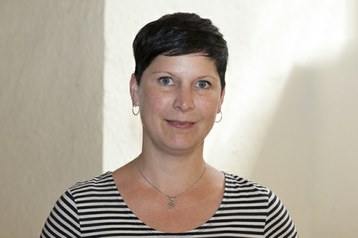
Julia Dornhöfer visited elderly people in retirement homes and at home and asked them about every day waiting situations.
Photo: Ingeborg Lehmann
How does waiting as an elderly person differ from other waiting contexts?
Waiting is a practice that is not only culturally and historically embedded, but also biographically. For someone who has experience truly existential or deeply emotional waiting situations, that person will judge the following waiting situations differently. If someone experienced, for instance, World War II, waiting to hear news about loved ones, other waiting situations don’t seem nearly as relevant to them. Another thing that is noticeable is that waiting as an elderly person often turns quickly into desire. Waiting was often defined as „anticipation“ by my interview partners. The tremendous simplicity of it moved me greatly. I met one lady who simply wanted to see the starlit sky from an open field one last time. As a young person, I realized what is important in the end. Waiting often evolves into a context of „what I’d like to experience one more time.“
How do elderly people perceive waiting situations?
An elderly person’s daily life is defined by a strict routine, the same exact pattern he or she follows every day – it gives people a sense of security. I had the feeling that daily waiting situations such as waiting for meals or the caretaker are so embedded in their daily lives that they view it more or less as a part of their routine. As we age, certain things are no longer relevant that used to strongly structure our lives: employment, caring for family, etc. It was interesting to see that new things took their place that determined people’s daily rhythm such as doctor’s visits, meals or their weekly rummy club. Waiting is no longer experienced as such and is therefore less unpleasant.
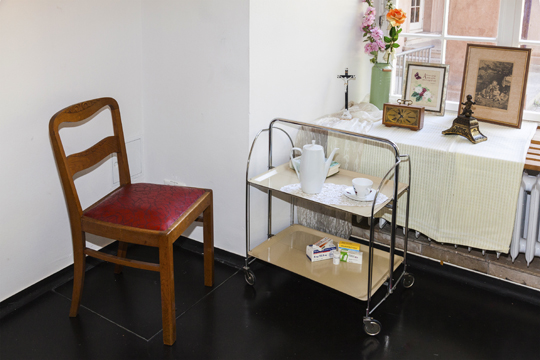
In this simulated room of an elderly person, visitors can listen to various interview clips. Photo: Ingeborg Lehmann
How do you prefer to spend your time waiting?
I am the kind of person who is simply happy to have ten minutes to stare off into space and have some „thinking time“. I love it. I listen to music and read, but I am also someone who enjoys simply watching people and letting the world unfold while thinking about the things that happen.
The exhibit „WarteArt“ („aWAITing Art) can be seen until May 28, 2017 in the Uniseum at the University of Freiburg, Bertoldstraße 17, 79085 Freiburg.
For the Uniseum’s opening hours, visit: www.uniseum.uni-freiburg.de
No entry fee.
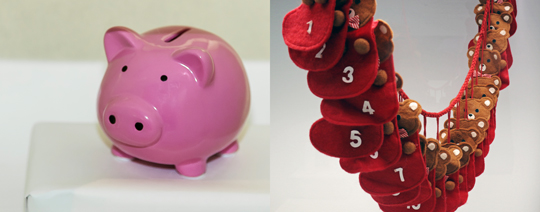 Along with the exhibits about traffic, the doctor’s office and aging, visitors can view items that can creatively measure time. Photos: Ingeborg Lehmann, Max Orlich
Along with the exhibits about traffic, the doctor’s office and aging, visitors can view items that can creatively measure time. Photos: Ingeborg Lehmann, Max Orlich

